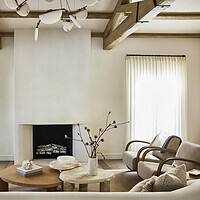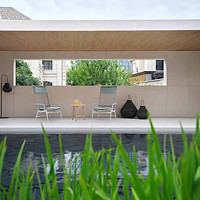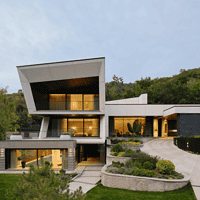So what is ‘natural ventilation’? How does it differ from mechanical ventilation? And who cares, why does it matter?! These are all sensible questions and important to consider if one is designing a new building or embarking on a refurbishment programme for an existing structure.
Natural ventilation is the ventilation of a room or building where wind and/or buoyancy provide the primary driving force for the facility’s air flow circulation. This is fundamentally different from a mechanical ventilation system where a fan provides the motive force for the air flow; these systems typically have zero or negligible air flow when the fans are not operating. The main difference between these two systems is that energy is required to drive the air flow with a mechanical ventilation scheme whereas no energy is needed in a natural ventilation scheme. At first glance one might therefore conclude that a natural ventilation system is preferred. However, there are other important factors to consider.
In addition to the fan power savings, the capital cost of natural ventilation systems is invariably lower than mechanical ventilation. It certainly is if the natural ventilation ‘system’ being contemplated just involves manually opening windows! There are other savings too though; if a central plant is being considered for a mechanical ventilation system, then this plant needs to be located somewhere and there are costs associated with the provision of this space.
Also, much less maintenance is needed for the upkeep of a natural ventilation system. It appears that the benefits of natural ventilation are obvious and that it would be foolish not to critically assess regular queries. When natural ventilation might not be suitable must also be considered.
Firstly, what if there is no wind and no temperature difference between the interior and exterior of a building? There are indeed instances when there is no wind and the only natural force available is from buoyancy. Theoretically, it is possible for the interior temperature to equal the exterior. However, if the space is occupied then there is a heat gain in the space of at least 65W/person. This in turn will result in the interior air being heated, which creates a difference in temperature. So, a buoyancy force will arise which will then ensure the necessary airflows can be achieved.
The second concern regarding cold weather is really important, and one which we think
has been ignored by natural ventilation proponents for too long. The fact of the matter is that if cold air is introduced directly onto people, it is unpleasant. No-one likes a cold draught in winter. The solution with natural ventilation systems has been to pre-heat the air with a radiator or the like, or to rely on the fact that people will close the vent/window resulting in inadequate ventilation!. There is a deep issue here. If the increase in heating from a natural ventilation system over the course of a winter season – which is necessary to cure a cold draught – is more than the fan power needed by a mechanical ventilation system, we would advocate the use of mechanical ventilation in colder weather rather than natural ventilation. The net result of detailed analysis shows that for typical non-domestic buildings in the UK, a natural ventilation system is a significantly lower energy option but only if the incoming cold air is pre-mixed with warm room air. If pre-mixing is not used, then it is actually preferable to install a local mechanical ventilation heat recovery (MVHR) unit for winter use.
Finally, let’s examine the final question about hot weather. When it is hot outside during the day, it is invariably much colder at night. If a natural ventilation system is designed in conjunction with a thermally massive building, then by night-cooling a building it is possible to create a situation where the rate of absorption of heat by the building is greater than the rate of heat generation by people, IT, lights etc. This results in the internal temperature being lower than the external temperature. Under these conditions the rate of air supply to the occupied zone should be set to the minimum level required to ensure sufficient air quality. Once the thermal mass has been heated up over the day so that the rate of heat absorption is no longer greater than the rate of heat generation, one should then change the ventilation strategy and throw open all the windows – the point at which this typically occurs is the late afternoon, once the external temperature has started to fall, and so leads to very comfortable conditions throughout the day.
So, natural ventilation is a lot more than just opening windows. This method is fine if you are only concerned about temperate weather conditions, such as late Spring or early Autumn. However, a more controlled system which involves a change in strategy over the course of the year and even over the course of a day is more helpful.















